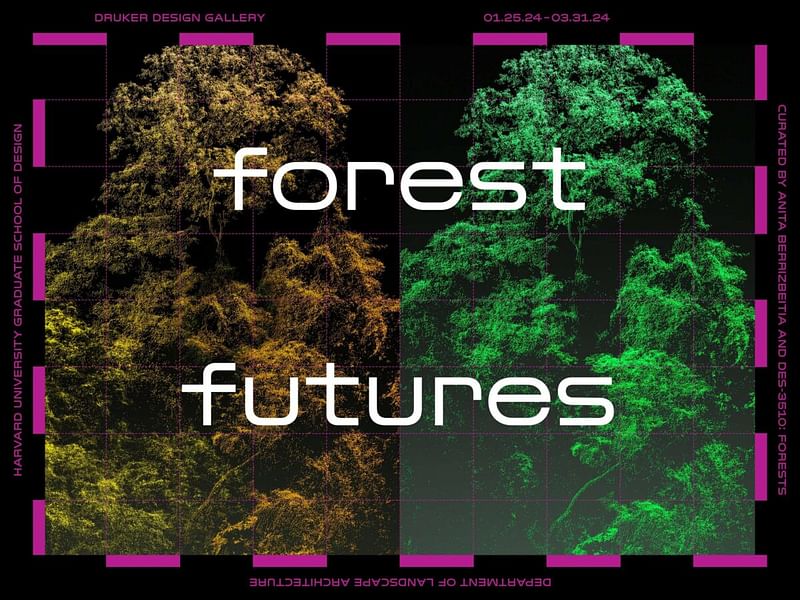FOREST FUTURES
Thursday, Jan 25, 20247 PM — Sunday, Mar 31, 20246 PMEDT
Cambridge, MA, US | Harvard GSD, Druker Design Gallery
Related
FOREST FUTURES explores the intertwined history of forests and humanity, critically examining the past and the present to emphasize our profound connection with these vital habitats. A glance at the ungraspable timeline of forest evolution, 350 million years, reveals an alarming fact: a millennium of human activity—a blink of an eye in geological time—has threatened the equilibrium of these life-sustaining ecosystems.
Through the collective efforts of scholars, scientists, designers, artists, policymakers, and communities to restore and conserve the biodiversity that remains, today’s forests have become designed environments. Yet, it is essential to recognize that silvicultural practices and other forms of forest management entail the construction of symbiotic relationships with living beings while enabling nature’s own processes to unfold freely. Trees—indeed, all flora—are wildlife.

RELATED NEWS Harvard GSD's FOREST FUTURES explores the past and present of our co-development with forests

FOREST FUTURES celebrates nature’s ineffable essence. By urging a sensorial connection beyond observation, the exhibition underscores the limits of logic alone to fathom the natural world’s complexity. Instinct over reason offers a further lens to envision potential narratives within the still-unknown realm of forests. The paradox lies in merging design—fundamentally a reasoned and measured endeavor—with raw nature. This juxtaposition produces the challenge—at times the overwhelming sensation—of learning the vast science of forests while at the same time staying deeply attuned to the powerful experiential dimension they offer.
FOREST FUTURES’ curatorial approach reflects the diverse storylines explored in the seminar FORESTS: History and Future Narratives at the Harvard Graduate School of Design. As forests capture the attention of multiple disciplines, each exhibition section incorporates historical, technical, artistic, and scientific perspectives. In addition, forests require many forms of labor. Beyond the actual planting—now undertaken by both human hands and robots—advocates, activists, citizen foresters, and volunteers contribute enormous efforts to making healthy forests a reality. Urban forests, in particular, become tangible expressions of the dialogue between design and the natural world, offering opportunities for climate change adaptation and environmental justice. Together, these various perspectives converge on the larger ambition of more equitable societies, each thriving under the vast canopies of the earth’s munificent forests.

Share
0 Comments
Comment as :